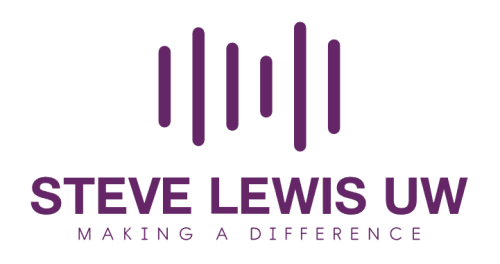Chapter 1: Understanding Your Target Market
At the heart of every successful business is an intimate understanding of its target market. Without understanding who your customers are and what they want, your product or service may fail to meet their needs. Moreover, your marketing strategies might not resonate with them, causing your efforts to fall flat.
Begin by gathering demographic information about your potential customers. This can include data on age, gender, location, income level, education level, marital status, and occupation. These factors can significantly influence consumer behavior and preferences. For instance, a high-income individual may value quality over price, while the opposite might be true for someone with less disposable income.
Beyond demographics, delve into psychographics – the attitudes, aspirations, and other psychological criteria of your potential customers. This can include information about their lifestyle, values, personality, attitudes, and interests. Are they risk-takers or do they prefer stability? Are they outgoing or introverted? What are their hobbies, and how do they like to spend their free time? This information can help you tailor your offerings and your marketing messages to appeal to your customer’s mindset.
In addition to demographics and psychographics, understand your potential customers’ behavior. When and why do they seek out products or services like yours? What features or qualities are they looking for? What problems are they trying to solve? Where do they typically buy these products or services, and what motivates them to choose one provider over another?
To gather this information, consider conducting surveys or interviews, hosting focus groups, or performing market research. You can also learn a lot about your target market by observing them, either in person or online, and by studying your competition.
Once you’ve gathered this data, you can create detailed customer personas. These are hypothetical, generalised representations of your ideal customers. Each persona represents a segment of your target market, and the personas as a whole should cover the full range of your customers. Use these personas to guide your product development and marketing strategies.
Chapter 2: Marketing and Promotional Strategies
Creating effective marketing and promotional strategies is critical to attract new customers. The tactics and channels you choose should be based on your understanding of your target market.
First, define your unique selling proposition (USP). This is what sets your business apart from your competitors. It could be anything from superior quality, lower prices, better customer service, or a unique feature that no one else offers. Your USP should be at the center of all your marketing and promotional messages.
Content marketing is an effective way to attract potential customers. By creating valuable, relevant content, you can engage your audience, build trust, and position your business as an industry expert. This could involve blogging, publishing white papers or eBooks, creating videos, or hosting webinars. The key is to provide value, not just promote your products or services.
Search engine optimisation (SEO) can significantly increase your online visibility. By optimising your website and content for search engines, you can rank higher in search results, making it easier for potential customers to find you. This involves keyword research, on-page optimisation (such as using keywords in your titles, headers, and content), and off-page optimisation (like earning backlinks from reputable sources).
Social media marketing can be a powerful tool for reaching and engaging your target audience. Depending on your market, you may want to maintain an active presence on platforms like Facebook, Twitter, Instagram, LinkedIn, or Pinterest. Post regularly, engage with your followers, and use these platforms to promote your content and your products or services.
Email marketing is one of the most effective marketing channels. By building an email list and sending regular newsletters or promotional offers, you can maintain contact with your audience, nurture relationships, and encourage repeat business. Just make sure your emails provide value, not just sales pitches. Don’t forget about traditional marketing methods. Depending on your target market, tactics like direct mail, print advertising, radio ads, or even billboards could be effective.
Lastly, consider paid advertising. This can include pay-per-click (PPC) advertising on search engines, social media ads, or display ads on relevant websites. With paid ads, you can target your audience with precision and get immediate results. However, it’s important to monitor your return on investment to ensure your ad spend is generating a profit.
Chapter 3: Customer Service and Retention
Once you’ve attracted new customers, the next step is to keep them. Retaining customers is typically more cost-effective than acquiring new ones, and satisfied customers are more likely to refer others to your business.
Offering exceptional customer service is one way to keep your customers satisfied. This could mean responding to queries promptly, resolving issues effectively, or going the extra mile to meet their needs. Show your customers that you value them, and they’re likely to remain loyal to your business.
Loyalty programs are another effective retention strategy. These can involve rewarding customers for repeat purchases, referrals, or other actions that benefit your business. Rewards can range from discounts and freebies to exclusive deals or special treatment.
Remember, it’s not just about retaining any customers, but the right ones. Analyse your customer data to identify your most profitable customers or those with the highest lifetime value. These are the customers who are most worth retaining.
Chapter 4: Networking and Strategic Partnerships
Networking and forming strategic partnerships can provide a significant boost to your customer acquisition efforts. By building relationships with others in your industry or related industries, you can tap into their customer base and vice versa. Attending industry events, trade shows, and conferences is a great way to meet potential partners. You can also join professional organisations or business groups in your area.
When forming partnerships, look for businesses that complement yours rather than compete with it. For instance, if you run a gym, you might partner with a local health food store or a physical therapist.
Also, consider forming partnerships with influencers in your industry. These could be bloggers, social media influencers, or anyone else who has a significant following. They can help promote your business to their audience, which can drive traffic and sales.
Chapter 5: Utilizing Customer Feedback and Reviews
Customer feedback and reviews can be a gold mine of information for improving your products or services and enhancing your overall customer experience. By understanding what your customers like and dislike about your business, you can make informed decisions to better meet their needs.
Moreover, positive reviews can help attract new customers. Many people look at reviews before making a purchase, and a high rating can be a powerful motivator. Encourage your customers to leave reviews by making it easy for them to do so. You could provide a link on your website, send a follow-up email after a purchase, or even offer a small incentive for leaving a review.
Remember, though, that it’s crucial to handle negative reviews appropriately. Respond promptly and professionally, and do your best to resolve the issue. This can turn a negative experience into a positive one and show potential customers that you take their satisfaction seriously.
Chapter 6: E-commerce Optimization
In the digital era, e-commerce optimisation is a vital aspect of attracting customers. First and foremost, ensure your website is user-friendly and intuitive. A complicated or confusing layout can drive potential customers away.
Your product descriptions should be detailed and enticing. Incorporate relevant keywords to improve SEO but avoid keyword stuffing. High-quality product photos from multiple angles can provide a more comprehensive view and improve the user experience.
Website speed is critical. Slow-loading pages can lead to high bounce rates. Optimise images, leverage browser caching, and consider a content delivery network (CDN) to speed up your site.
Another key factor is mobile optimisation. With a growing number of customers shopping on their mobile devices, a mobile-responsive site is no longer optional. A streamlined checkout process can reduce cart abandonment. Offer guest checkout options and various payment methods, and ensure that shipping costs are clear. Lastly, implement a system to recover abandoned carts. This could be a simple email reminder or offering a small discount to incentives completion of the purchase.
Chapter 7: Social Media Engagement
While we touched on social media in our marketing strategies, it’s essential to delve deeper into engagement tactics. Social media platforms offer businesses a unique way to interact with customers, humanise their brand, and build relationships. First, choose your platforms wisely. Not all social media platforms will be relevant to your business. Identify where your target audience spends their time and focus your efforts there.
Create engaging content that encourages interaction. This could be through questions, polls, contests, or user-generated content. When your followers comment on your posts, respond promptly and in a friendly, conversational tone. In addition to regular posts, leverage the features unique to each platform. For Instagram, this could be IG stories or IGTV. For LinkedIn, consider publishing articles or hosting live sessions. Consider partnering with influencers in your industry to reach a broader audience. An influencer partnership can provide your brand with credibility and access to a larger, engaged audience.
Chapter 8: Referral Programs
Referral programs incentivise your existing customers to bring in new customers. They are a powerful tool, as people trust recommendations from friends and family more than any advertising. When designing your referral program, make the incentive attractive for both the referrer and the referee. This could be a discount, free product, or service upgrade.
Promote your referral program through all your channels—on your website, in emails, and on social media. Regular reminders can keep it top of mind for your customers.
Monitor your referral program’s success. Are customers using it? Are their referrals converting? Use this data to refine your program and make it more effective.
Chapter 9: Collaboration with Complementary Businesses
Collaboration with businesses that offer complementary products or services can help you reach a broader audience. Such partnerships can benefit all involved parties through shared resources, co-branding opportunities, and expanded customer bases. One approach is co-hosting events, webinars, or contests. Another could be package deals or bundled offers that provide added value to the customer.
For online businesses, consider guest blogging or hosting a podcast together. This can position both businesses as industry experts and draw in new customers from each other’s audiences.
Chapter 10: Local SEO
If your business serves a local market, optimising for local SEO is critical. This can make your business more visible to customers in your area.Ensure your business is listed in relevant local directories, and the information (name, address, phone number) is consistent across all listings. Google My Business is a crucial platform for local businesses—claim your listing and optimise it with relevant details, photos, and regular updates.
Encourage your customers to leave reviews on Google and other platforms. Respond to these reviews professionally, regardless of whether they are positive or negative. Use location-specific keywords in your website content and meta tags. For instance, if you own a pizza restaurant in London, you might use keywords like “best pizza in London” or “London pizza restaurant”.
Chapter 11: Guerrilla Marketing
Guerrilla marketing is an unconventional strategy intended to get maximum results from minimal resources. This approach is all about creativity and thinking outside the box.
Guerrilla marketing can take many forms. It could be a memorable public stunt, a unique viral social media campaign, or even a creative graffiti ad. The key is to create something so intriguing or entertaining that people naturally want to share it.
While guerrilla marketing can be highly effective, it’s important to consider the risks. These campaigns can sometimes backfire if they are seen as insensitive or in poor taste. Always consider the potential impact on your brand’s reputation.
Chapter 12: Email Marketing
Despite the growth of other digital channels, email marketing remains one of the most effective strategies for getting and retaining customers.
Start by building your email list. Offer a valuable lead magnet—like a discount, a free guide, or access to exclusive content—to incentivise sign-ups.
Segment your list based on various factors—such as where the subscriber is in the buying cycle or their past interactions with your emails—to send targeted, personalised messages.
Craft compelling subject lines to improve open rates. The body of your email should deliver on the promise of the subject line and end with a clear call to action.
Don’t forget to track your results. Most email marketing platforms provide analytics on open rates, click-through rates, and conversions. Use this data to refine your strategy and improve your results.
Chapter 13: Content Marketing
Content marketing involves creating and sharing valuable content to attract and retain customers. This is a long-term strategy that, when done right, can establish your business as a trusted authority in your field. Content can take many forms: blog posts, videos, podcasts, infographics, ebooks, webinars, and more. The type of content you create should depend on your audience’s preferences and the nature of your business. Consistency is key in content marketing. Develop a content calendar to plan your content production and distribution. Also, make sure your content is optimised for search engines to increase your visibility.
Promote your content through all your channels. This could include your website, email newsletters, and social media. You could also consider guest posting on other relevant blogs or websites to reach a wider audience.
Chapter 14: Public Relations
A strong public relations strategy can boost your business’s reputation and visibility. This involves managing the spread of information between your company and the public.
Press releases are a traditional PR tool. When you have news to share—like a new product launch, an event, or a major company milestone—write a press release and distribute it to relevant media outlets. Consider seeking out speaking engagements at industry events or conferences. This can position your business as a thought leader in your field.
Building relationships with journalists and influencers in your industry can also be beneficial. They can help amplify your message and reach a larger audience.
Chapter 15: Exceptional Customer Service
The final, and arguably the most important, way to get customers for your business is to provide exceptional customer service. Happy customers are more likely to become repeat customers and refer others to your business.
First, make sure your customer service team is well-trained and knowledgeable about your products or services. They should be able to handle inquiries and complaints in a professional and empathetic manner. Ensure you have multiple channels for customer support. This could include phone, email, live chat, and social media. The quicker and easier it is for customers to get help, the better their experience will be.
Regularly ask for feedback from your customers. Surveys, social media, and review sites can provide valuable insights into what you’re doing well and where you can improve.
Always remember: if a customer has a positive experience with your business, they are likely to tell a few people; if they have a negative experience, they are likely to tell a lot more. Therefore, investing in exceptional customer service can pay off in the long run.
The goal of all these strategies is to get customers for your business, but remember that getting them is just the beginning. Retaining these customers and turning them into loyal advocates for your brand should be the ultimate goal. It’s a continuous process of learning, adapting, and improving to meet and exceed your customers’ needs and expectations.
 Steve Lewis UW Making A Difference
Steve Lewis UW Making A Difference






